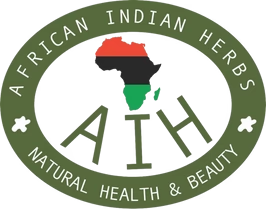- Your cart is empty
- Continue shopping
Africa is a continent steeped in ancient traditions, diverse cultures, and a rich tapestry of healing practices. One of the most fascinating aspects of African culture is its traditional herbs, which have been used for centuries not just as remedies but as symbols of heritage and wisdom. In this article, we delve into the world of traditional herbs in Africa, exploring their significance, common types, practices, modern applications, and the challenges and opportunities they present.
I. Introduction to African Traditional Medicine
African traditional medicine is a holistic approach to healthcare that encompasses a range of practices, including herbalism, spiritual healing, and ritualistic ceremonies. It is deeply rooted in the belief that physical, mental, and spiritual well-being are interconnected and that nature provides abundant resources for healing.
II. The Significance of Traditional Herbs
A. Historical Context
The use of traditional herbs in Africa dates back thousands of years, with indigenous tribes relying on nature’s bounty to treat ailments and maintain health. This historical context is crucial to understanding the deep-seated relationship between African communities and their natural environment.
B. Cultural Importance
Traditional herbs are not just medicinal; they hold immense cultural significance. They are often used in ceremonies, rites of passage, and as offerings to ancestors, highlighting their role as conduits between the physical and spiritual realms.
III. Common Traditional Herbs in Africa
A. Moringa: The Miracle Tree
Moringa is celebrated for its nutritional density, containing vitamins, minerals, and antioxidants essential for health. It is used to boost immunity, improve digestion, and enhance overall well-being.
B. Hibiscus: A Floral Elixir
Hibiscus tea is a popular beverage known for its cardiovascular benefits, including lowering blood pressure and cholesterol levels. It is also rich in antioxidants, making it a valuable addition to any wellness routine.
C. Aloe Vera: Nature’s Soothing Agent
Aloe vera is prized for its healing properties, particularly for skin conditions like burns, wounds, and eczema. It is also used internally to aid digestion and support detoxification.
D. Neem: The Versatile Wonder
Neem is revered for its antibacterial, antifungal, and antiviral properties. It is used in skincare, hair care, and even dental hygiene products due to its cleansing and protective effects.
E. Turmeric: The Golden Spice of Health
Turmeric contains curcumin, a potent anti-inflammatory compound. It is used to alleviate pain, reduce inflammation, and support joint health, among other benefits.
F. Ginger: Zesty and Medicinal
Ginger is a versatile herb known for its digestive properties. It aids in relieving nausea, indigestion, and gastrointestinal discomfort, making it a staple in many traditional remedies.
IV. Traditional Herb Practices Across Africa
A. Rituals and Beliefs
The use of traditional herbs is often intertwined with rituals and spiritual beliefs. Healing ceremonies may involve specific herbs to cleanse, purify, or protect individuals from negative energies.
B. Healing Modalities
Traditional healers, known as herbalists or sangomas, play a vital role in communities. They possess deep knowledge of herbs and their therapeutic uses, passing down their wisdom through generations.
C. Indigenous Knowledge Systems
African traditional medicine is not just about the herbs; it encompasses a holistic understanding of health, including lifestyle, diet, and mental well-being. This holistic approach reflects the interconnectedness of nature and humanity.
V. Modern Applications and Research
A. Moringa: Nutritional Powerhouse
Modern research validates the nutritional benefits of moringa, leading to its incorporation into supplements, health foods, and skincare products worldwide.
B. Hibiscus: Cardiovascular Support
Studies have shown hibiscus’s effectiveness in lowering blood pressure and cholesterol, sparking interest in its potential as a natural remedy for cardiovascular health.
C. Aloe Vera: Skin and Digestive Health
The therapeutic properties of aloe vera have led to its widespread use in cosmetics, pharmaceuticals, and wellness products, catering to skin and digestive health needs.
D. Neem: Pest Control and Skincare
Neem’s natural insect-repelling properties have found applications in agriculture and pest control, while its skincare benefits continue to be explored in the cosmetics industry.
E. Turmeric: Anti-Inflammatory Properties
Turmeric supplements and extracts are popular for their anti-inflammatory effects, with ongoing research exploring their potential for managing chronic inflammatory conditions.
F. Ginger: Digestive Aid and Immune Booster
Ginger supplements and teas are sought after for their digestive benefits and immune-boosting properties, appealing to individuals looking for natural health solutions.
VI. Challenges and Opportunities
A. Conservation Concerns
The growing demand for traditional herbs raises concerns about overharvesting and habitat destruction, highlighting the need for sustainable practices and conservation efforts.
B. Integration with Modern Medicine
There is a growing interest in integrating traditional medicine with modern healthcare systems, recognizing the value of holistic approaches in addressing complex health issues.
C. Economic Potential
The global market for traditional herbs presents economic opportunities for African communities, promoting entrepreneurship, job creation, and sustainable development.
Conclusion: Embracing the Richness of African Traditional Medicine
In conclusion, traditional herbs in Africa represent not just a repository of natural remedies but a reflection of cultural heritage, spiritual beliefs, and holistic approaches to health. As

